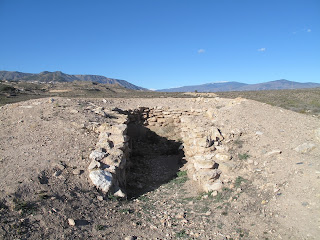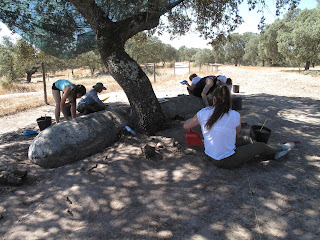Egyptian kingdoms dated
Radioactive isotopes nail the timeline of Egyptian dynasties.
Nature, 17/06/2010, by Richard Lovett
To circumvent this problem, Bronk Ramsey and his team collected 211 samples from museums in Europe and the United States. To ensure that the samples were made from organic material that grew at the same time that the artefact was made, they avoided artefacts made of wood and bone, relying instead on baskets, textiles and foods.
Aligning the pharaohs
The findings are likely to settle some long-standing disputes among Egyptologists.
.
Informação em português, disponível em:
http://www.publico.pt/Ci%C3%AAncias/a-idade-dos-reinados-do-antigo-egipto-confirmouse-nos-vegetais_1442457
Nature, 17/06/2010, by Richard Lovett
"A three-year study of hundreds of artefacts looks set to settle several long-standing debates about Egypt's ancient dynasties.
The study, which appears in today's issue of Science1 http://www.nature.com/news/2010/100617/full/news.2010.304.html#B1#B1 , is the first to use high-precision measurements of radioactive carbon isotopes to produce a detailed timeline for the reigns of Egyptian pharaohs from about 2650 BC to 1100 BC.
"It is a very, very important finding," says Hendrik Bruins, an archaeologist and geoscientist at Ben-Gurion University of the Negev, Israel, who was not associated with the work. "For the first time, radiocarbon dating more or less corroborates the essence of the Egyptian historical chronology."
Led by Christopher Bronk Ramsey, a physicist and mathematician at the University of Oxford, UK, the researchers use the well-established technique of measuring the amount of radioactive carbon-14 in ancient artefacts. Plants absorb carbon-14 as they grow, and the radioisotope decays naturally over time after they die. Measuring carbon-14 levels in artefacts made of organic material allows archaeologists to determine their age.
Archaeologists throughout the world use radiocarbon dating, but surprisingly, no high-precision dating work had been done on Egyptian artefacts before. Egypt has strict bans on the export of archaeological items, and the equipment needed for a high-quality study did not exist in Egypt, says Bronk Ramsey.
To circumvent this problem, Bronk Ramsey and his team collected 211 samples from museums in Europe and the United States. To ensure that the samples were made from organic material that grew at the same time that the artefact was made, they avoided artefacts made of wood and bone, relying instead on baskets, textiles and foods.
Aligning the pharaohs
Most of the samples were taken from tombs known to be associated with the reign of specific pharaohs. Because the order in which these pharaohs had ruled - and the approximate lengths of their reigns - was already known, the samples could be examined as a group. Measuring many samples at once improved the precision of some dates to within just two decades, far better than individual samples would allow.
The findings are likely to settle some long-standing disputes among Egyptologists.
One debate involves the start of the New Kingdom, which included famous pharaohs such as Amenhotep, Tutankhamen and Ramses. Historians had disagreed on precisely when this era started, with one group favouring 1539 BC, and another placing the date at about 1550 BC. The findings of Bronk Ramsey and his team favour the earlier date - and possibly even a decade earlier than that.
Similarly, there has also been some debate about the starting date for the Middle Kingdom, which preceded the New Kingdom. Traditionally, the beginning of that era has been tied to an astronomical bearing on the star Sirius. But it wasn't clear where the sighting had been taken, and that led to date estimates ranging from 2055 BC to 2009 BC. Again, the latest study by Bronk Ramsey and his colleagues supports the earlier date. "This is really a very important data set," says Bruins.
The data might also help archaeologists and historians to determine where the explosion of the volcano Thera figures in the history of Egypt. The eruption destroyed much of the Greek isle of Santorini and sent shock waves through Mediterranean civilization. The precise date of the eruption is of some contention, but by comparing previous results with the latest data, it is possible to conclude that the explosion took place before the beginning of the New Kingdom, says Bruins"
Furthermore, the same methods can be used to correlate Egyptian history with that of the rest of the Mediterranean. "We can finally compare apples with apples," Bruins says.
http://www.nature.com/news/2010/100617/full/news.2010.304.htmlInformação em português, disponível em:
http://www.publico.pt/Ci%C3%AAncias/a-idade-dos-reinados-do-antigo-egipto-confirmouse-nos-vegetais_1442457

.JPG)
